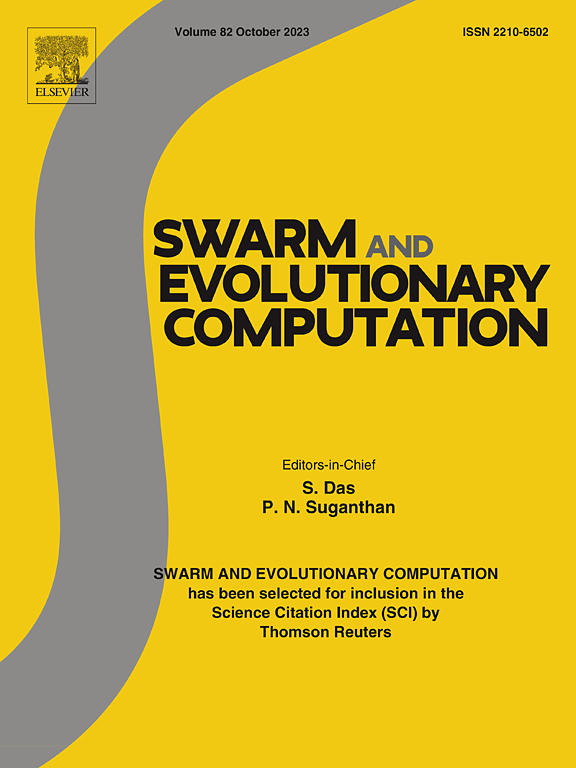基于图神经网络的黑箱优化问题探索性景观分析
IF 8.5
1区 计算机科学
Q1 COMPUTER SCIENCE, ARTIFICIAL INTELLIGENCE
引用次数: 0
摘要
大多数现实世界的优化问题都很难理解,其中一些是黑盒优化问题(BBOPs)。探索性景观分析(ELA)为处理BBOPs的算法设计铺平了道路。现有的ELA方法对未发现的问题存在局限性,缺乏对问题本身的分析。为此,本研究在BBOP代理模型上引入了一种利用图神经网络(GNN)的新型ELA框架。具体而言,构建了一个神经网络代理模型,利用该模型的体系结构以图的形式表示BBOP。然后,GNN负责捕获图表示的BBOP和高级特征之间的关系。多目标问题的多模态是优化中最显著的特征之一。在独立测试集上准确率超过99%,证明了该框架的有效性,同时避免了问题维度的影响。本文章由计算机程序翻译,如有差异,请以英文原文为准。
Exploratory landscape analysis on black-box optimization problems via Graph Neural Network
Most real-world optimization problems are poorly understood, some of which are black-box optimization problems (BBOPs). Exploratory landscape analysis (ELA) paves the way for algorithm design to deal with BBOPs. Existing ELA methods have limitations on unseen problems and lack analysis on the problem itself. To this end, this study introduces a novel ELA framework leveraging Graph Neural Network (GNN) upon BBOP’s surrogate model. Specifically, a neural network surrogate model is constructed whose architecture is utilized to represent BBOP in the form of graph. Then, GNN is responsible for capturing the relationships between the graph-represented BBOP and high-level features. As one of the most notable features in optimization, multimodality of multi-objective problems is to be identified for illustration. More than 99% accuracy on independent test set demonstrates the effectiveness of the proposed framework with simultaneously avoiding the effect of problem dimensions.
求助全文
通过发布文献求助,成功后即可免费获取论文全文。
去求助
来源期刊

Swarm and Evolutionary Computation
COMPUTER SCIENCE, ARTIFICIAL INTELLIGENCEC-COMPUTER SCIENCE, THEORY & METHODS
CiteScore
16.00
自引率
12.00%
发文量
169
期刊介绍:
Swarm and Evolutionary Computation is a pioneering peer-reviewed journal focused on the latest research and advancements in nature-inspired intelligent computation using swarm and evolutionary algorithms. It covers theoretical, experimental, and practical aspects of these paradigms and their hybrids, promoting interdisciplinary research. The journal prioritizes the publication of high-quality, original articles that push the boundaries of evolutionary computation and swarm intelligence. Additionally, it welcomes survey papers on current topics and novel applications. Topics of interest include but are not limited to: Genetic Algorithms, and Genetic Programming, Evolution Strategies, and Evolutionary Programming, Differential Evolution, Artificial Immune Systems, Particle Swarms, Ant Colony, Bacterial Foraging, Artificial Bees, Fireflies Algorithm, Harmony Search, Artificial Life, Digital Organisms, Estimation of Distribution Algorithms, Stochastic Diffusion Search, Quantum Computing, Nano Computing, Membrane Computing, Human-centric Computing, Hybridization of Algorithms, Memetic Computing, Autonomic Computing, Self-organizing systems, Combinatorial, Discrete, Binary, Constrained, Multi-objective, Multi-modal, Dynamic, and Large-scale Optimization.
 求助内容:
求助内容: 应助结果提醒方式:
应助结果提醒方式:


